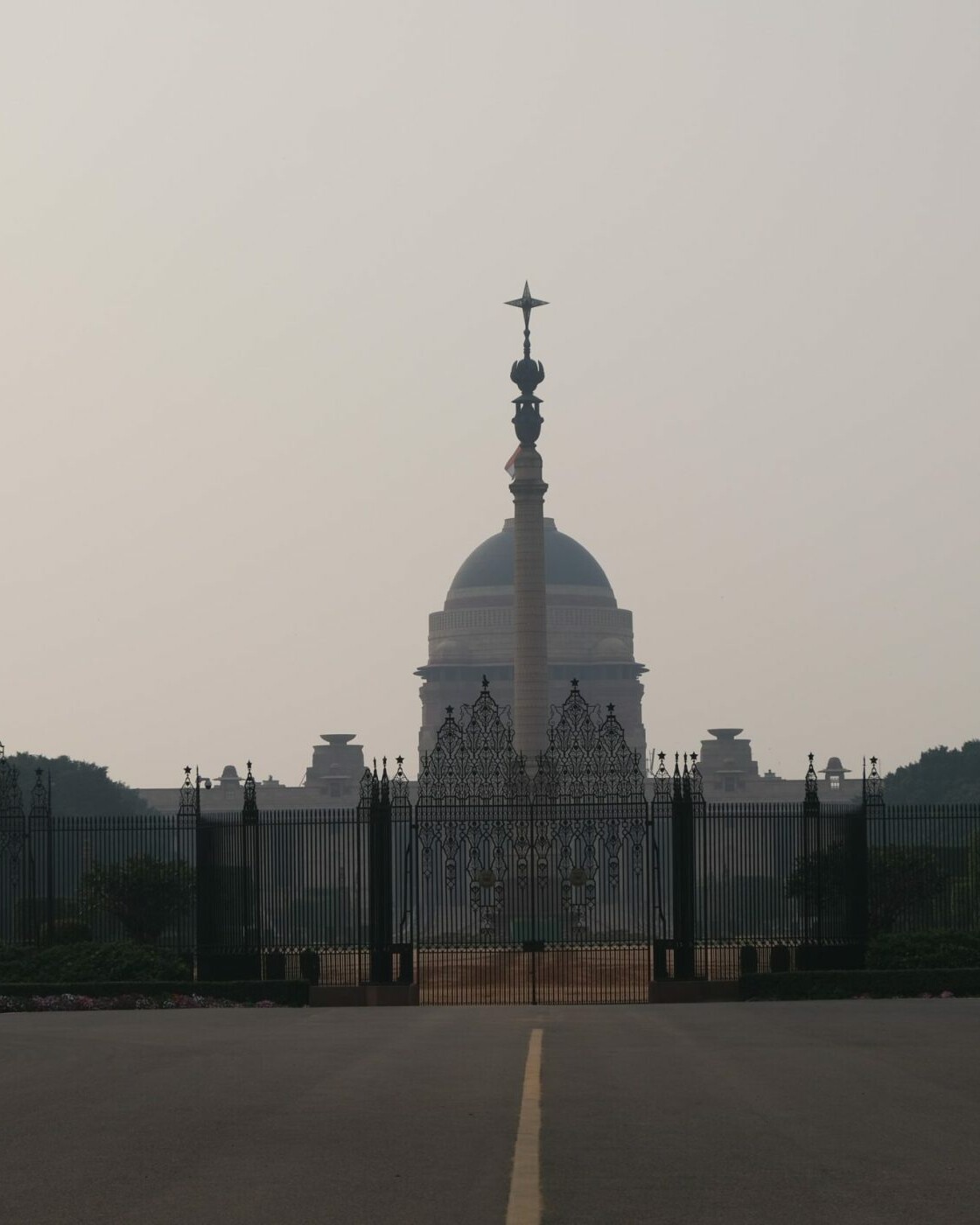MC Explains: All you need to know about the SC order banning ‘apartmentalisation’ of Corbusian Chandigarh
Expert Speaks by: Mr. Sunil Tyagi, Managing Partner at ZEUS Law
Published in https://www.moneycontrol.com
|
The Supreme Court this week banned and stopped the conversion of independent houses into apartments in 30 sectors in Chandigarh, saying that the administration was “blindly sanctioning” building plans, when it is apparent that these plans are, in effect, converting one dwelling unit into three apartments. On January 10, Justices B.R. Gavai and B.V. Nagarathna observed that, “Chandigarh administration chooses to stay smug, taking a stand on paper that floor-wise sale of residential building is not permissible, while residential floors are being advertised for sale right under its nose,” said the 131-page order. It said that permitting redensification of Phase-I of the city comprising Sectors 1 to 30, which have heritage value on account of being ‘Corbusian Chandigarh,’ without the plan being approved by the Chandigarh Heritage Conservation Committee, was contrary to the Chandigarh Master Plan (CMP) 2031. Corbusian is a reference to Le Corbusier, the Swiss-French architect who planned the city of Chandigarh. In 2016, UNESCO had conferred heritage status on the Capitol Complex, designed by Corbusier. The apex court made these observations while hearing a plea by residents of the northern part of Chandigarh who are resisting the administration’s practice of converting single residential units into apartments. The residents of Sector 10 had informed the court how sales were taking place share wise indirectly, thus irrevocably altering the character of the first planned city of India, and overburdening the existing infrastructure and facilities. With this order, several cases where property deals were under process or memorandums of understanding (MOUs) or agreements that were underway, stand null and void. The order The Supreme Court ordered that the Chandigarh Administration shall not sanction any plan of a building which ex-facie appears to be the modus operandi to convert a single dwelling unit into three different apartments occupied by three strangers. “No memorandums of understanding (MoU) or agreement or settlement among co-owners of a residential unit shall be registered nor shall it be enforceable in law for the purpose of bifurcation or division of a single residential unit into floor-wise apartments. With this, the MoUs under process, if any signed between the buyer and the seller, stand null and void,” the order said. The court directed the Central government and the Chandigarh Administration to freeze floor area ratio (FAR) and ordered to not increase it any further. The court said that the number of floors in Phase I shall be restricted to three with a uniform maximum height as deemed appropriate by the heritage committee keeping in view the requirement to maintain the heritage status of Phase I. The court ordered the Chandigarh Administration to not resort to formulate rules or by-laws without prior consultation of the heritage committee and prior approval of the Central government. The court said it was necessary to strike a proper balance between sustainable development and environmental protection and appealed to the legislature, the executive and policy makers at the Centre and State levels to make necessary provisions to carry out Environmental Impact Assessment (EIA) studies before permitting urban development. The Bench further noted that though the Chandigarh Administration permits one dwelling unit to be converted into three apartments, its adverse effect on traffic has not been addressed. Manmohan Lal (Mac) Sarin, General Secretary of the Sarin Memorial Legal Aid Foundation, and a senior advocate whose foundation is supporting the Sector 10 Resident Welfare Association (RWA), who had moved the apex court in the matter, told Moneycontrol that he had lived in the ‘green’ city for almost 68 years and has seen it grow from barren fields to the city it is today. It was initially planned for five lakh people and today the number has surpassed a million. “There’s only a certain amount of burden that a city can take,” he said. “With the result that there is no parking, and all vehicles are on the roads and Chandigarh is fast becoming another Delhi. That’s when a petition was filed by the residents of Sector 10 Resident Welfare Association. The High Court gave us only partial relief, but the Supreme Court has given us all that we had asked for. It has clearly said that you can’t indirectly do what is banned directly,” said Sarin. “We discovered over the years that builders, in connivance with the estate office, had devised a unique method. They would buy the house, demolish it, construct apartments and then instead of selling them, they would make people buy shares,” he said. The share system prevalent in Chandigarh Through this modus operandi, the developers in Chandigarh were seen constructing three apartments on three floors, and thereafter selling these apartments to three persons, who would enter into an MoU. Under the MoU, the person occupying the ground floor and basement would get 50 percent share in the plot, the person occupying the first floor would get 30 percent, and the person occupying the second or third floor would get 20 percent. In that way, what is directly prohibited by law, is being indirectly done by the builders/developers. “By selling a share you do not get a ground, first and second floor. You get a share in the entire building. And in the event of a dispute you will have to apply for partition which several innocent buyers do not even know. The SC has made it clear that in the event of a dispute, the building will be put up for auction,” explained Sarin. Does this mean that ‘family’ owners cannot sell property? This was argued during the proceedings. If an owner dies leaving three children each having one-third share, one family member can sell, but selling a share with the idea of having an apartment is prohibited. The estate office will determine whether it is an indirect way of selling an apartment or selling a floor. The onus is now on the estate office to determine. What if one of the children wishes to sell his share in order to foot bills for his medical treatment? “He cannot sell the floor. He can only sell 50 percent share and it is up to the estate office to determine if the sale is to set up an apartment or a genuine sale to raise money to pay for his medical treatment,” said Sarin. Delhi’s Lutyen’s Bungalow zone and the ‘Corbusian’ Zone This order is an attempt to control density, protect the environment and preserve the ‘premium’ attached to Chandigarh’s ‘Corbusian’ zone, which in many ways is similar to Delhi’s Lutyen’s Bungalow Zone (LBZ). The order relies on Delhi’s LBZ and says that sectors 1 to 30 be declared a heritage zone, as these were part of the original planning of French architect Corbusier. It makes it clear that the FAR in these sectors cannot be altered. Any change whatsoever, will have to be undertaken with the approval of the heritage committee. In that respect, they have put this at par with Lutyens zone, said experts. The Lutyen’s zone is the country’s power district where powerful politicians rub shoulders with top industrialists and bureaucrats. The area is one of the priciest real estate markets in the country, where construction is highly regulated, as it is a designated heritage zone. Amrita Shergill Marg, Prithviraj Road and Dr APJ Abdul Kalam Road, which form the core of the Lutyen’s zone, are known as Billionaires’ Row and is the “ultimate address” for the uber-rich. Since it is a heritage zone, there are strict height, FAR, and reconstruction norms. This is primarily to protect the low skyline. While these areas certainly offer the luxury of an address, they do not provide the luxury of space. The plot size may be big, but the developed or built-up area could be much less. There is also little scope for redevelopment due to strict building norms. The Supreme Court judgment makes it clear that preservation of the heritage tag conferred on Corbusier zone (Sectors 1-30) is paramount. It states that floor-wise sale to multiple owners in these areas is not permitted. This is to ensure that the density of the area is preserved and there is no undue pressure on civic infrastructure, said Sunil Tyagi, Managing Partner at Zeus Law. This is also akin to rules prevalent in Noida and the Lutyens Bungalow Zone in Delhi, he added. “Sale of floors is not permitted in Noida. The fact that land is leasehold also helps. It helps maintain the density of the area. There may be less traction as the number of buyers purchasing the entire plot are fewer compared to those wanting to purchase a floor. This is because buying the entire bungalow spread across 500 square yards is far more expensive than buying a single floor which may cost a few lakhs,” he said. But this does help maintain the density of the area and in that sense adds to the premium. In the LBZ in Delhi too, there can only be one owner per plot and construction is permitted only on 30 percent, with lesser FAR. The area commands a premium due to its low density, location, and the fact that Delhi’s crème de la crème reside here, he said. This is unlike areas such as Greater Kailash or Defence Colony in Delhi where most of the plots have four apartments with a different owner on each floor. This has put immense pressure on the already crumbling infrastructure in these areas, he said. The SC order does not apply to sectors beyond Sector 30 Chandigarh was made a Union Territory (UT) and became the capital of Punjab and Haryana in 1966. The city was developed in two phases ― Phase I consisting of Sectors 1 to 30, and Phase II consisting of Sectors 31 to 47. Phase I was designed for low-rise plotted development for a total population of 1.5 lakh. Phase II sectors were expected to have a much higher density compared to sectors in Phase I. The second phase came up after population in Chandigarh increased. Chandigarh Housing Board has several apartment blocks and, group housing schemes in some of these sectors. The SC order does not apply to them, said experts. Real estate agents say that prices in sectors 1 to 30 may get impacted as no further construction can take place. However, these sectors will continue to command a premium due to their location and being referred to as Very Important Person (VIP) sectors. Plots in these sectors vary from 125 sq yd to 4,000 sq yd, and are priced between Rs 2 crore and Rs 60-70 crore. In sectors beyond Sector 30, the size of the plots varies from 125 sq yd to 2,000 sq ys and are priced between Rs 2 crore and Rs 16 crore. “Prices may increase in sectors 31-47 by 10-15 percent on account of this order,” said Sunil Gupta, a Chandigarh-based property dealer. . |






















